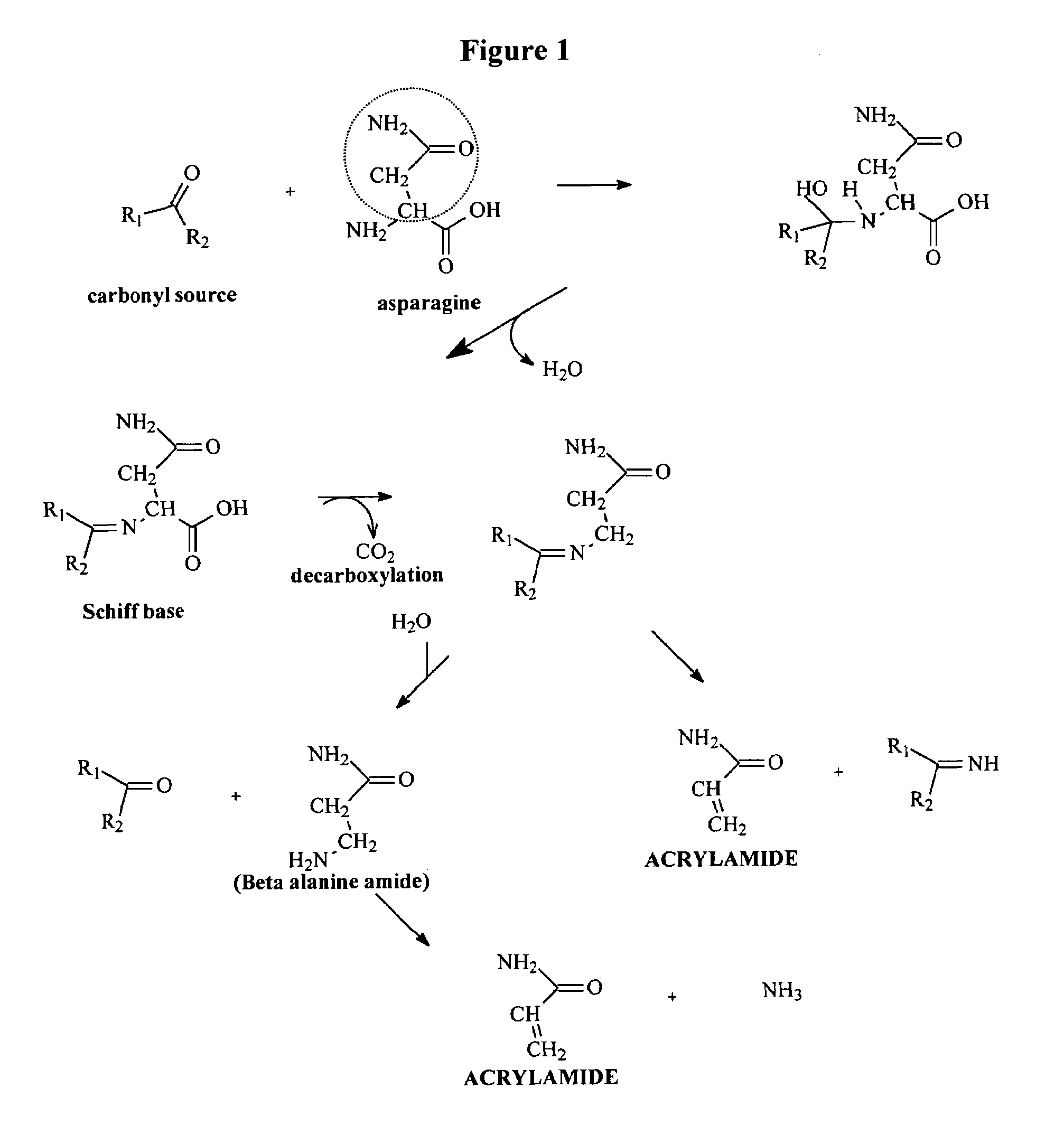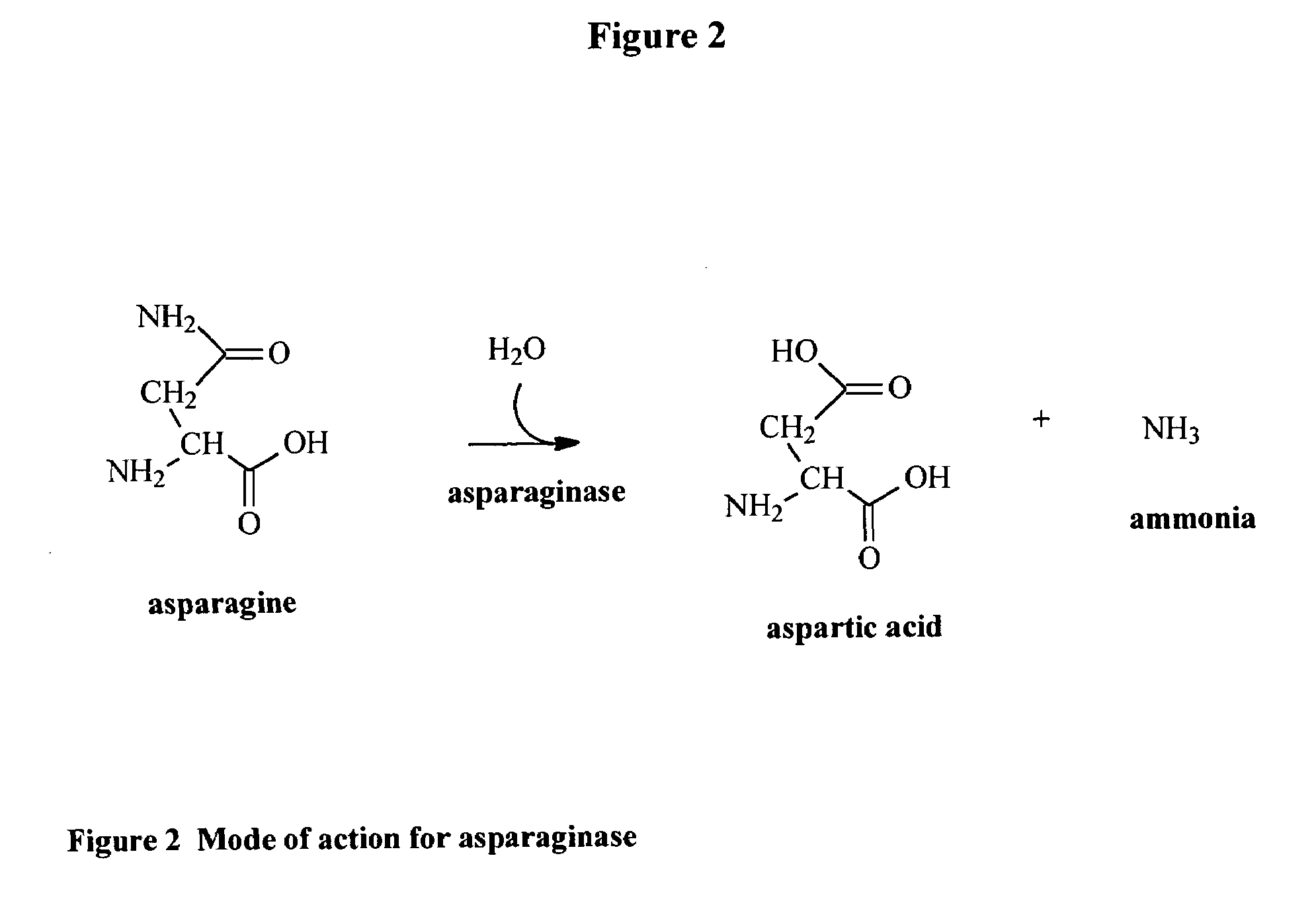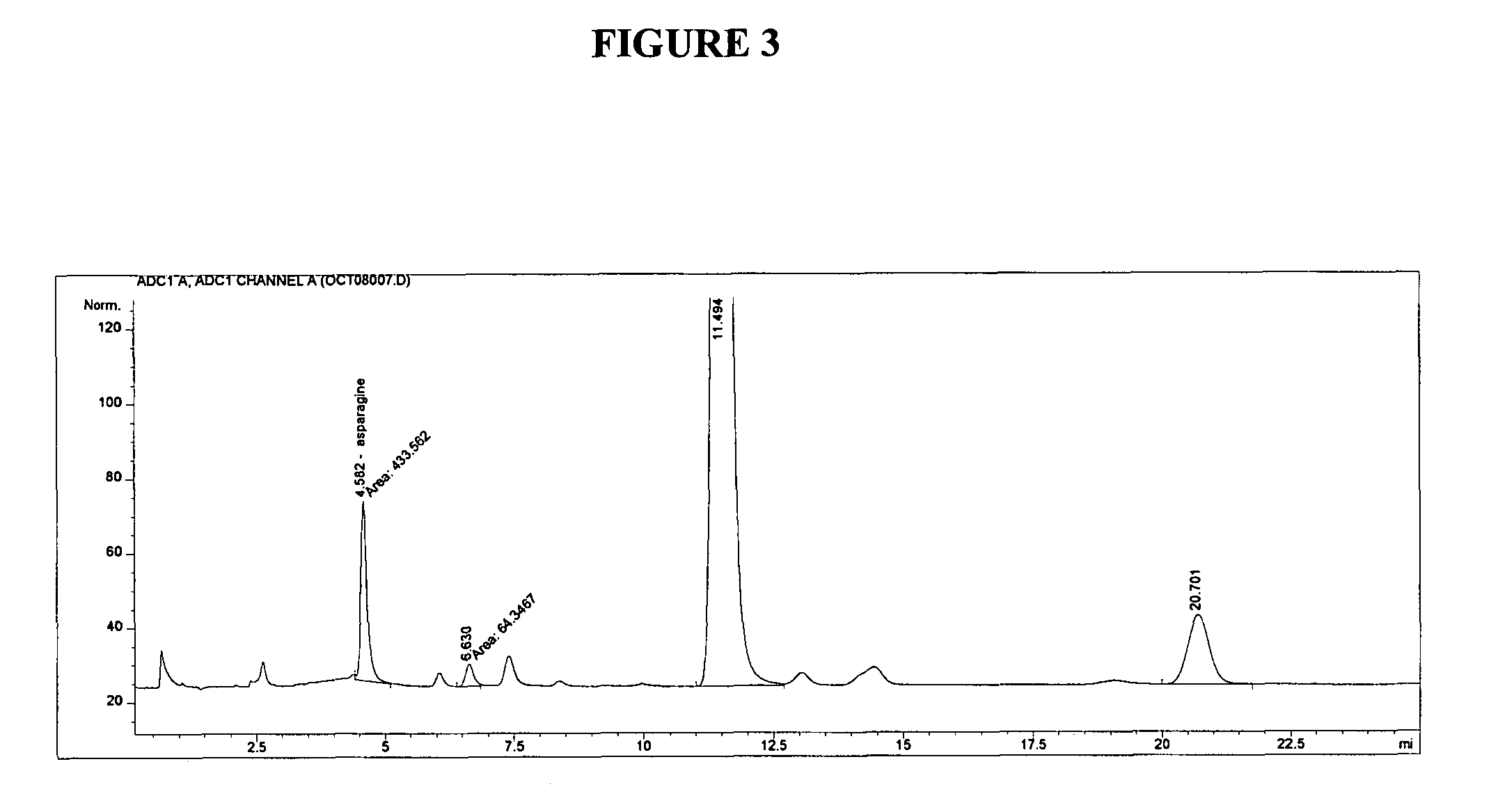Method for reduction of acrylamide in roasted coffee beans, roasted coffee beans having reduced levels of acrylamide, and article of commerce
a technology of acrylamide and roasted coffee beans, which is applied in the field of acrylamide reductionroasted coffee beans having reduced levels of acrylamide, and articles of commerce, can solve the problems of limited human population data available, and achieve the effects of reducing or low levels of acrylamide, and reducing the level of acrylamide in roasted coffee beans
- Summary
- Abstract
- Description
- Claims
- Application Information
AI Technical Summary
Benefits of technology
Problems solved by technology
Method used
Image
Examples
example 1
Enzyme Solution Absorption
[0249]An enzyme solution is formulated consisting of 1,000 units of Asparaginase and 0.1% (of coffee weight) of a cellulase dissolved in 600 grams of distilled water. Twelve hundred grams of washed arabica green coffee beans from Guatemala are placed in a 3 liter round bottom flask, which is then placed on a rotovap with a water bath set at 35° C. A 25 inch vacuum is pulled on the rotating flask for 5 minutes, then enough enzyme solution is added to the flask to wet the surface of the coffee beans. The vacuum is then released. The vacuum is applied to the system for about 10 seconds and then released 2 more times. The flask of coffee beans is then left to rotate at atmospheric pressure until all of the enzyme solution on the surface of the beans is absorbed. This process is repeated until 600 grams of enzyme solution is added to the coffee.
[0250]The coffee is then transferred to a pressure vessel and 80 psi pressure is applied using nitrogen gas. The wet co...
example 2
Dominant Bath
[0253]Washed arabica green coffee beans (Sample #1, Green) are moistened to about 25% moisture using atmospheric pressure steam. The coffee beans are then soaked in water in a ratio of steamed coffee beans to water of about 1:4 with gentle agitation for about 30 minutes. The extracted coffee beans are removed and the extract is then used to soak another batch of pre-moistened coffee beans. This process is repeated, with a coffee beans to extract ratio of between about 1:4 and about 1:1, until the solids contained in the extract achieve a constant level.
[0254]This extract is used to soak a fresh batch of pre-moistened green coffee beans in a ratio of 270 g pre-moistened coffee to 504 g of extract for 20 minutes with gentle agitation. The coffee beans are separated from the extract (this extract is Sample #2), dried (these dried beans are Sample #3 Green), and roasted (these dried and roasted beans are Sample #3 Roasted). The roasted coffee beans are then optionally groun...
example 3
Dominant Bath with Deactivated Enzyme
[0259]Washed arabica green coffee beans (Sample #1, Green) are moistened to about 25% moisture using atmospheric pressure steam. The coffee beans are then soaked in water in a ratio of steamed coffee beans to water of about 1:4 with gentle agitation for about 30 minutes. The extracted coffee beans are removed and the extract is then used to soak another batch of pre-moistened coffee beans. This process is repeated, with a coffee beans to extract ratio of between about 1:4 and about 1:1, until the solids contained in the extract achieve a constant level.
[0260]This extract is used to soak a fresh batch of pre-moistened green coffee beans in a ratio of 270 g pre-moistened coffee to 504 g of extract for 20 minutes with gentle agitation. The coffee beans are separated from the extract (this extract is Sample #2), dried (these dried beans are Sample #3 Green), and roasted. The roasted coffee beans are then optionally ground to form roast and ground cof...
PUM
 Login to View More
Login to View More Abstract
Description
Claims
Application Information
 Login to View More
Login to View More - R&D
- Intellectual Property
- Life Sciences
- Materials
- Tech Scout
- Unparalleled Data Quality
- Higher Quality Content
- 60% Fewer Hallucinations
Browse by: Latest US Patents, China's latest patents, Technical Efficacy Thesaurus, Application Domain, Technology Topic, Popular Technical Reports.
© 2025 PatSnap. All rights reserved.Legal|Privacy policy|Modern Slavery Act Transparency Statement|Sitemap|About US| Contact US: help@patsnap.com



